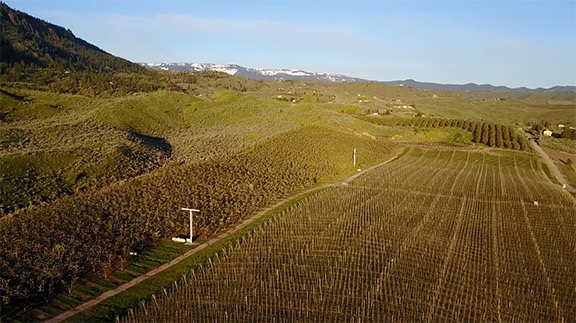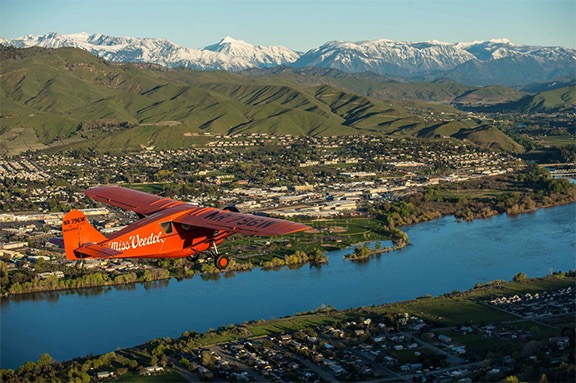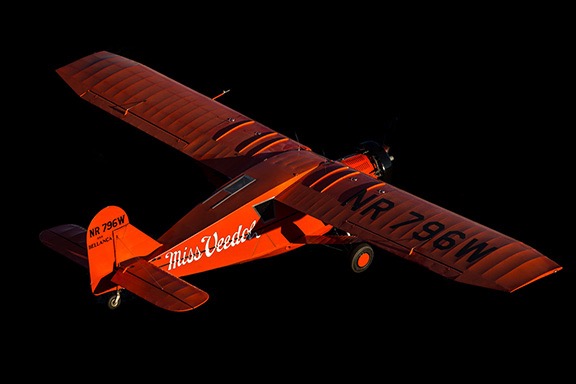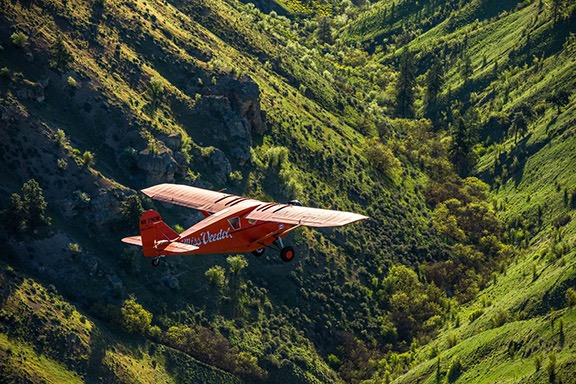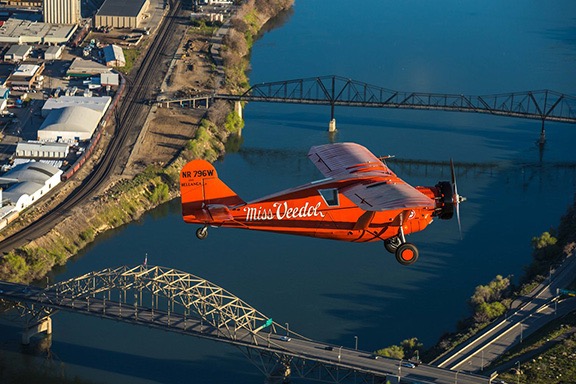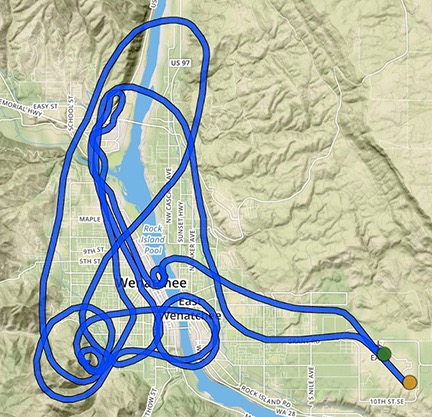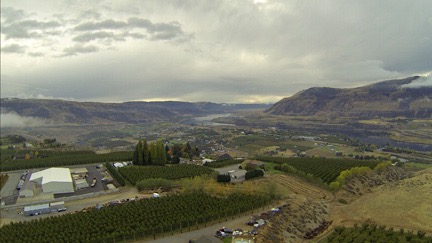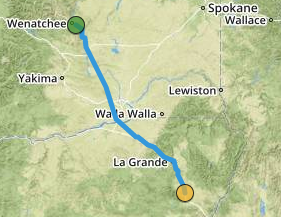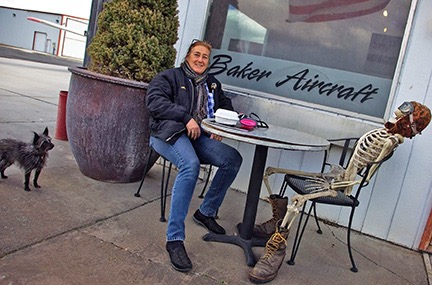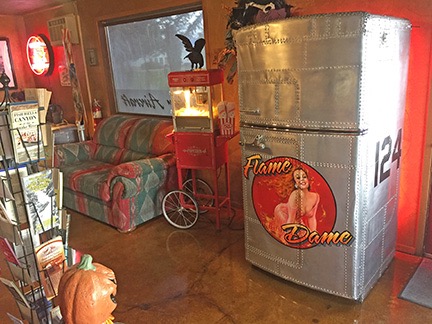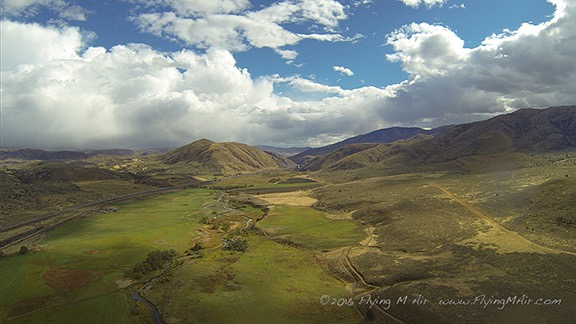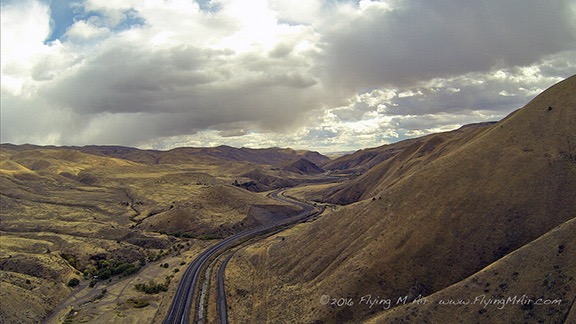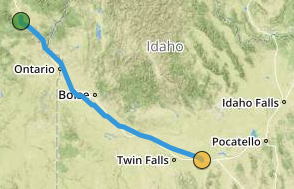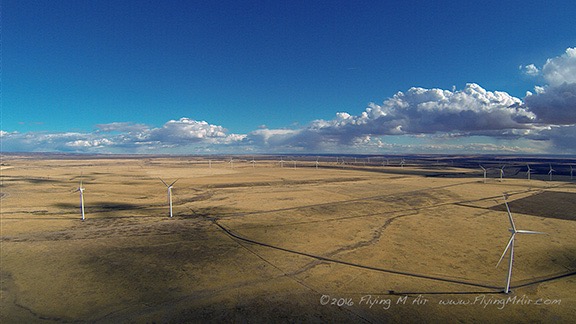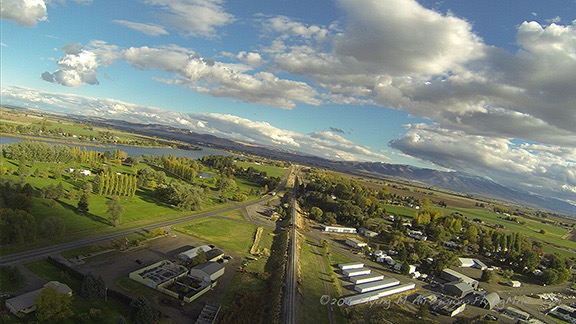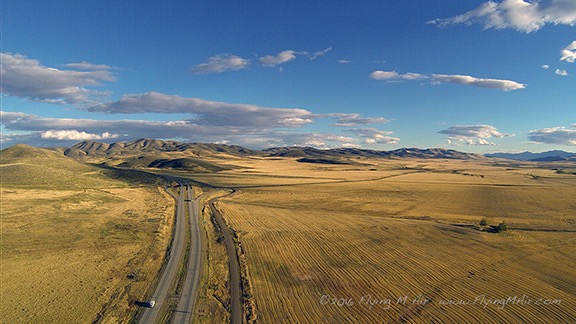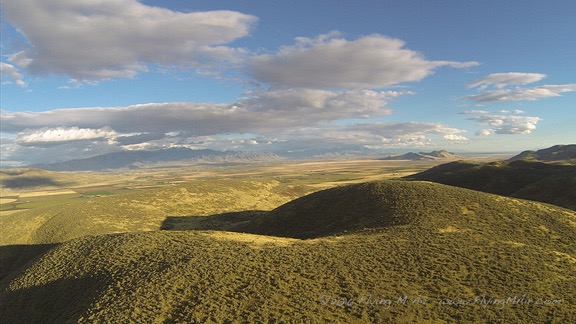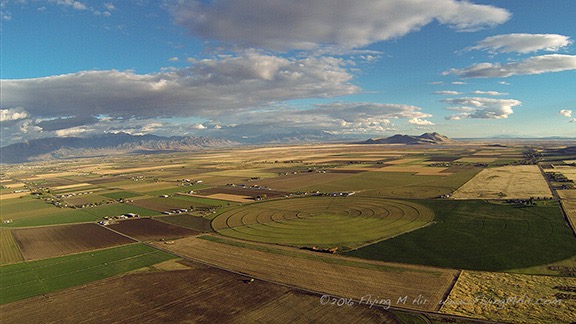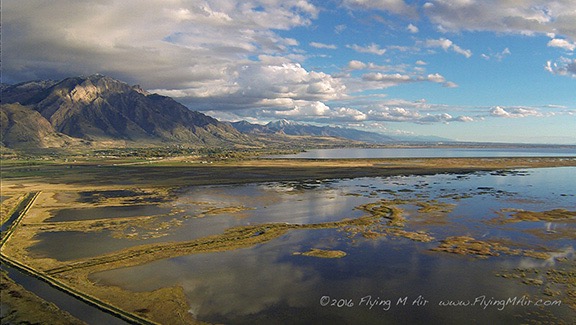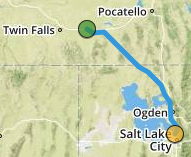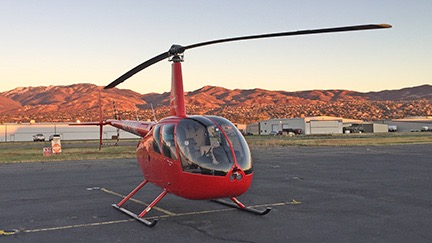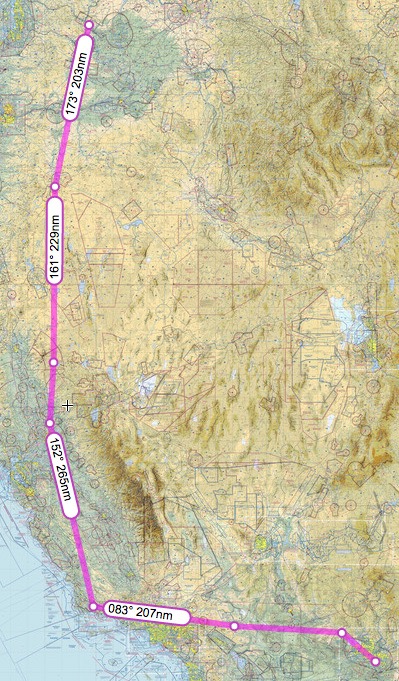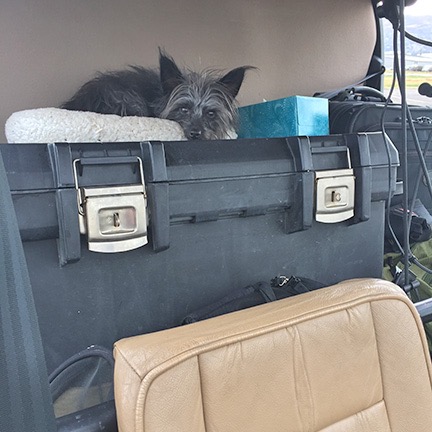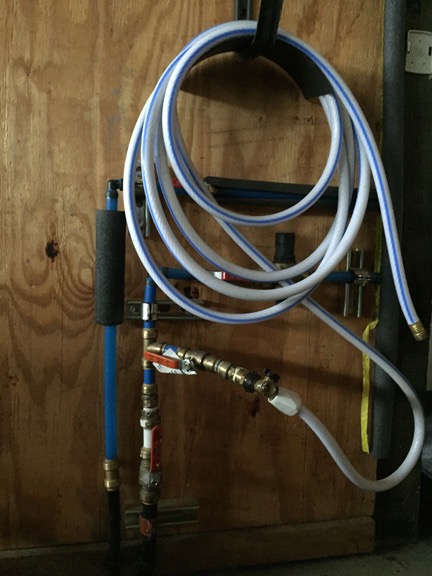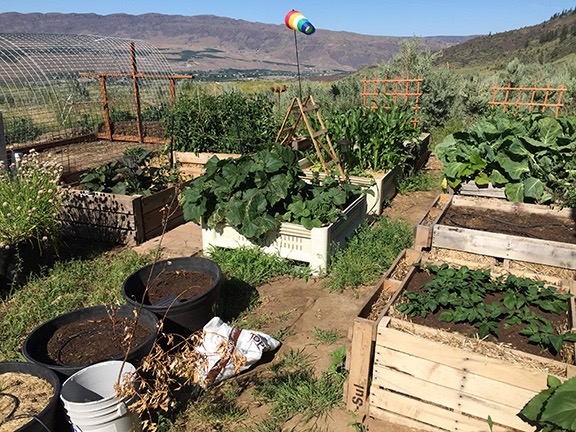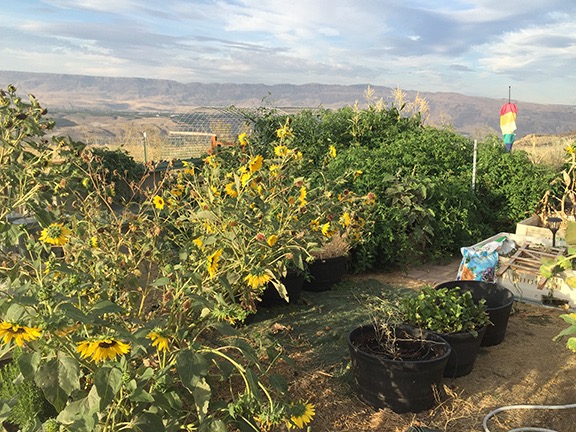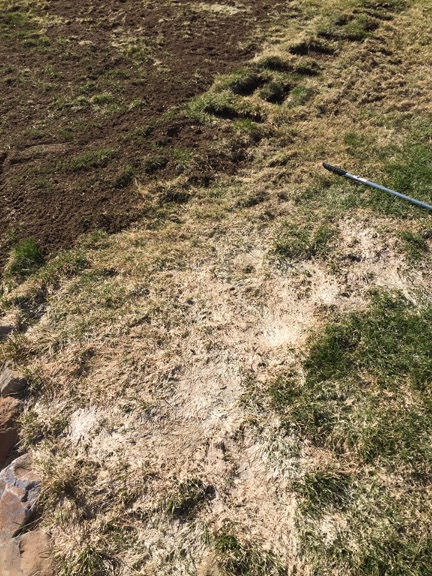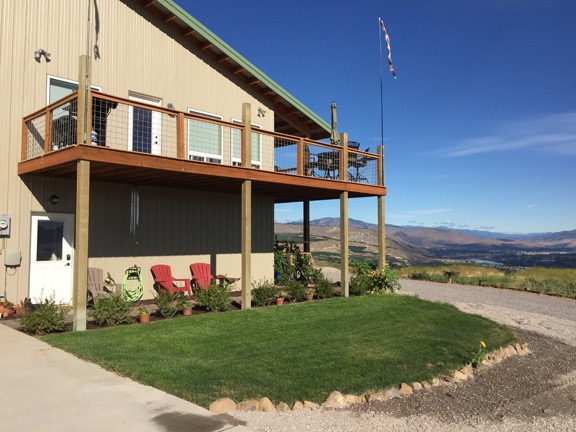I get started on my winter preparation chores.
Thought I’d write up a quick blog post to review a few of the things I did yesterday to prep for winter and maybe list a few that still need to be done.
Winter in Wenatchee
I should start off by saying that winter in the Wenatchee area, where I live, isn’t as cold and nasty as you might think. Yes, Washington is in the northwestern corner of the country and I live at about 47.4° of latitude there. But as surprising as it might seem, our winters are just about the same as the ones I experienced in Northern New Jersey years ago, which sits at about 41° of latitude. Here’s some data from Sperling’s Best Places:

I’m finding it hard to believe that we have fewer sunny days than the New York Metro area, but that’s likely due to the winter when we get cloud cover 4 out of every 7 days (my estimate). In the rest of the year, it’s sunny most days. The rainfall numbers (8.8 annual inches in Wenatchee vs. 42.6 in Harrington Park) and precipitation days (64 vs. 113) tell the tale. We even get less snow.
One of the two main reasons I left New Jersey back in 1997 was to get away from the cold winters. (The other was financial; I can have a much better lifestyle out west for the same or less money.) So I think it surprised a lot of people when I made the move to Washington State. But there are a lot of things beside the weather to attract and keep me here — I’ve mentioned a lot of them elsewhere in this blog.
Still, the weather does dip below freezing in the winter here and, like in Arizona, it does it earlier than it did back east. It seems that the coldest days here are right around Christmas. (Back east, it started getting coldest around New Year’s day and didn’t let up until mid February.) I’ve experienced freezes here as early as November, which is why I start winterizing as soon as we get our first frost.
That was this past Tuesday morning.
Irrigation
Because of our “high desert” like environment, the only way to get a garden or leafy trees to grow is to put them on irrigation.
I’m a real pro at setting up drip irrigation — I did it at my Arizona home not long after we moved in and were able to do some sort of landscaping there. (Long story; not worth retelling.) The benefit of drip irrigation over sprinklers is that you can bring water directly to the plants that need it. That saves water and cuts down on weeds.
I have four irrigation systems at my Washington home:
- My vegetable garden was the first one I set up. It runs from a battery-operated timer and provides water to the raised garden beds, a flower garden beside my shed, and the flower garden at the entrance to my driveway. I also ran the line under my driveway to deliver water to the first trees I planted on the south side of my driveway, including a handful of fruit trees (cherry and apple).
- My front lawn was the next one. The only reason I have a lawn is because my dog likes grass. The lawn is small and is bordered by rocks and my driveway on three sides and a row of lilac trees I planted right in front of my home on the other. This system also runs on a battery-operated timer and it includes three pop-up sprinklers in the law and a bunch of drip lines for the lilac bushes and some marionberry bushes a friend gave me.
- Two professionally installed irrigation lines on a programmable 4-zone timer provide water to the trees I’ve planted along the road and all the way down in my bee yard. I have over 1,000 feet of road frontage and the lines run almost that entire length. I add drip emitters every time I plant another tree.
The main thing to worry about with irrigation lines in the winter is that if you don’t drain them, they’ll freeze and possibly crack. That means tracking down leaks and doing a lot of repairs in the spring. I obviously want to avoid that.
Over the past couple of weeks, I’ve been cutting back on the water being delivered to my garden, lawn, and trees, mostly by adjusting settings in the irrigation systems. When the weather finally turned full autumn last week, I shut most of them off completely. A friend in the area suggested giving everything one final soaking before winterizing. Mother nature is doing that for me: there’s a double storm system coming through the area that should be delivering lots of rain. So I shut everything down yesterday and winterized it.
What does winterizing entail? Here’s what I do:
- Shut off the water source at the source. Three systems run from the “frost free” valve at my shed; the one from my lawn is a spigot at the front of my house. which has an internal shutoff valve.
- Disconnect the water lines. This makes it easier for them to drain. Or for water to expand if there’s any left in the water line and it freezes.
- Use an air compressor to blow out the lines. I bought all the equipment to do that last year: male and female hose fittings that can connect any hose fitting to my compressor. My compressor is a huge affair on wheels that my friend Bob gave me. I have it connected to a very long hose (also from Bob) on a reel I bought and installed my car garage. The hose is long enough — if you can believe this — to reach my shed about 100 feet away from my front door. So it took only minutes to run the compressor hose out there, hook it up to the various lines, and blow out each line. Then I cranked the compressor hose back in. Done.
Th only other thing I need to do is gather up and drain the hoses I’ve used around my yard, coil them back up, and store them in the shed until next spring. I’ll likely do that next week when the weather clears up again. They’re not at risk of freezing.

This Frankenstein’s monster is where the water comes into my building and goes all kinds of places — including a hose for the inside of my garage. I designed this crazy setup so I could actually drain all the water out of my pipes from one place.
Inside my garage, under the stairs where the water comes out of my slab and goes up into my home, my water lines also need a bit of prep. That’s easy. I have a ceramic heater that I place in front of the PEX pipes. I plug that into a Thermo Cube — a temperature sensitive outlet that turns on at 35°F and turns off at 45°F. So if temperatures get down to freezing inside my garage — which is possible once in a while — the heater will turn on and keep that area warm. No chance of pipes freezing.
The Garden
My vegetable garden this year was better than ever before. Until the tomatoes took over.
I planted and harvested sugar snap peas, beans, broccoli, brussels sprouts, peppers, onions, okra, eggplant, beets, corn, zucchini, yellow squash, cucumbers, various herbs, and potatoes. Everything except the brussels sprouts provided me with a good harvest. The sprouts were attacked by aphids and grasshoppers that I was simply unable to keep under control. The zucchini, yellow squash, and cucumbers were attacked by squash bugs, but I managed to get a good harvest before they came.

Here’s my garden in the spring, before the tomatoes and sunflowers took over.
I also planted just four tomato plants. Unfortunately, some “volunteer” tomato plants also started growing. These were from seeds of tomatoes that had fallen to the ground, likely at the end of the previous season. At first, I pulled them out. Then I potted some and gave them to neighbors and friends. Then I pulled more out. Then I thought, well, what’s a few more tomato plants?
I went away for a week in the beginning of August. When I got back, those volunteer tomato plants had pretty much taken over one side of the garden, making it impossible for me to reach the second batch of corn that I wanted to harvest.
And then the spiders moved in. Big yellow and black ones that an entomologist friend assures my are not harmful. There were at least two that I saw. Who knows how many more lurked in the jungle of tomato plant leaves? I made sure I always wore gloves when picking tomatoes.
And then I started taking pruners with me when I picked tomatoes. Ever time I picked a basket full, I’d lop off huge branches of the plants. I eventually regained access to my eggplant plants, which began producing again. The peppers were a complete loss, as was the corn. If my chickens hadn’t met an untimely end, they’d likely be eating back the plants. But because they’re gone, the tomato plants soon invaded the fenced-in chicken yard.

Out of control tomatoes and sunflowers in my garden. At this point, I’d already harvested much of my garden’s crops.
I should mention that there comes a point when your neighbors and friends stop taking tomatoes from you and you feel as if you eat another bowl of gazpacho, you’ll die of tomato poisoning (if there is such a thing).
When the frost set in the other day, I have to say that I was glad to see frost damage on some of those plants. I’d finally get rid of them.
But I will eventually have the task of cutting them all back and putting the plants in a compost pile. I’ve already been doing this a bit with grass clippings and other tomato plant cuttings. I put them in the raised planters I’ve already harvested from. When the snow falls, it’ll form a heavy blanket over each planter’s pile. Snowmelt will help break down the plants. In the spring, I’ll just use a rake to loosen up the previous year’s soil and new compost. Then I can add a half bag of fresh garden soil, work it in, and plant.
This year’s chore will be difficult. As soon as the frost kills the plants, I’ll get to it. I figure an hour or two a day through the rest of October will finish it up.
I almost forgot about the invading sunflowers. They grew all over my garden area and at the corner of my front walkway. They’ve been dying and I’ve been pulling them out for the past month or so. Still have a few to go. They go down to my big yard waste pile, which is a low area alongside the road just past my windsock. The quail are having a field day on the seeds that are dropping. I guess I’ll be fighting sunflowers next year, too.

The last of the potatoes from my garden.
In the meantime, I harvested the rest of my potatoes yesterday. This was the first time I’d ever grown potatoes and I started with a few from my pantry that had grown “eyes.” I followed the instructions I found on the web and put them in their own pallet planter. I never put that planter on irrigation — I just watered it occasionally. Next year, I’ll irrigate; I think I’ll get more potatoes that way.
The Lawn

Here’s what part of my lawn looked like this spring. The top part of this photo shows the dead grass raked out; the bottom shows what long grass looks like if left under snow for months at a time. Lesson learned.
I learned my lesson about the lawn this spring: if you don’t cut the grass down short before the snow comes, you’ll start the season with an ugly brown patch that requires a ton of raking to prepare for spring growth.
Even though I’ve turned off the irrigation, my lawn continues to grow — although more slowly than it did in the summer. So I’ll keep cutting it.
It’s not a big deal because it’s a small lawn. I have an electric mower that works very well. The whole job takes about 15 minutes, including prepping the mower and then dumping the grass clippings and putting the mower away when I’m done. I suspect I’ll keep at it until either the first snow is forecast or I go away for the winter.

Here’s what my lawn looked like this summer. Not perfect, but I’m proud of it. It’s the first lawn I’ve ever planted, grown, and tended to in my life. (And yes, that is a pesky volunteer sunflower along the gravel area.)
My Cheat
Oh, yeah — maybe I should have admitted that at the top of the post: I don’t stay here for the winter. I actually never intended to — even when I first saw this homesite and knew it was what I wanted. As far as I’m concerned, this is a three season place. When the temperatures begin to drop and that cloud cover moves in like a cold winter blanket, I’m out of here, headed to points south: Arizona and California.
I’m lucky to have a very good house-sitter who comes with her Doberman to keep an eye on things for me. She’ll be here for most of the time I’m gone and has family nearby to help her if anything goes wrong.
Still, I want to prepare my place so it’s easy for her to tend to — and worry-free for me. That’s why I winterize.
